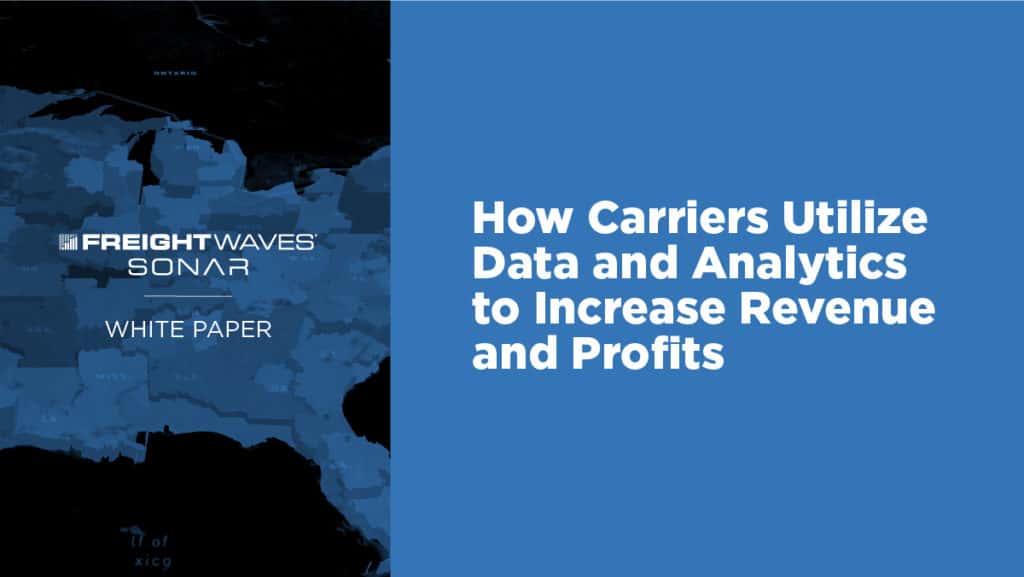Mobile data can play a pivotal role in building the supply value chain. Mobile devices have functions that provide valuable data for the supply value chain. Mobile devices have proven optimal for implementing innovative strategies, connecting freight loads with other equipment and assets, and more. The data collected from mobile devices offer excellent value for the supply value chain for obvious reasons, including proactive route planning after considering critical weather disruptions.
But even more importantly, this freight data enables shippers to optimize their company’s operations in various ways by avoiding overspend and more. Mobile devices can then provide the critical touchpoint for collecting and using near-real-time data and freight analytics. Additionally, shippers can benefit from mobile data usage in building the supply value chain. And it’s important to realize how that is derived from the challenges of using outdated data and the substantial benefits of real-time freight data to empower the network with actionable insights.
While logistics continue to support the supply value chain, many challenges result from lagging data. Lagging data prevents the supply value chain from functioning efficiently. Near-real-time data is necessary to increase visibility throughout the supply value chain. Near-real-time data assists with managing logistics in profound ways.
Near-real-time data provides consistent and accurate information about all things within the supply chain. This includes shipment times, capacity, market information, and many other valuable items. Instead of merely hoping for the best, shippers can know what’s actually happening, why, where and when to make high-priority moves. As a result, shipments can reach destinations faster, creating better experiences for customers and even saving lives, such as those associated with COVID-19 vaccine distribution. Shippers and carriers can avoid unnecessary delays and provide more detailed information to increase visibility throughout the process.

Mobile data empowers shippers with the most readily available and accessible data. The processing power of smartphones allows them to run sophisticated logistics programs; programs that analyze and organize data. Shippers that do not have access to near-real-time data run the risk of failing to build the supply value chain. Failure to do this also increases companies’ exposure to more supply chain risks that can damage or even ruin businesses.
On the importance of real-time data, Forbes states, “Real-time data is also essential to maintain visibility across the supply chain. While the report shows that supply chain leaders generally report greater visibility than others, this is an area where all companies need to improve, especially as they look further down their multi-tiered supply chain. Without high levels of visibility into suppliers and sub-suppliers, companies increase their exposure to supply chain risks and become less resilient.” This makes clear that shippers need access to near-real-time data.
This type of data ensures that they stay prepared against the unknown and have added support for the supply value chain. And since the problem with awaiting invoiced data means shippers must wait for the payment to complete, failure to consider all tender data opens the door to even more risk. That’s where FreightWaves SONAR can make a meaningful difference, providing the connection to tendered and invoicing data, empowering teams and leaders with the insights needed to stay strategic and proactive.
The leading benefits of accessible, collaborative infrastructure are best utilized by using current data. The multi-tiered collaborative infrastructure allows for more efficient shipper, freight brokers, and carrier operations. Yet, these operations can further improve beyond simple collaborative efforts. For example, any redundant process needs current data, which provides shippers with several benefits. Freight predicting and forecasting are two of the most attractive of these benefits. Shippers with access to existing data can better predict freight pricing for freight shipments.
Additionally, shippers prepared with near-real-time data have greater insight into the market. This insight allows them to enter negotiations with a clearer understanding of the market. Current data also coincides with increased visibility into the supply value chain. This will enable shippers to accommodate the needs of their clientele better. They also can better accommodate their employees’ needs, reducing costly issues like driver turnover and lost business.
Shippers can grow more strategically with mobile data, which provides analytics-driven insights that consider tendered, real-time data. Real-time data is responsible for one of the most beneficial assets for any shipping company – staying strategic. Real-time data helps limit potential disasters and prepares shippers to make the best decisions. Shippers wishing to build upon the supply value chain with mobile data should consider a partnership with the right logistics partner and ensure they have an advanced freight forecasting platform ready to use. Get started by requesting a FreightWaves SONAR demo by clicking the button below.
